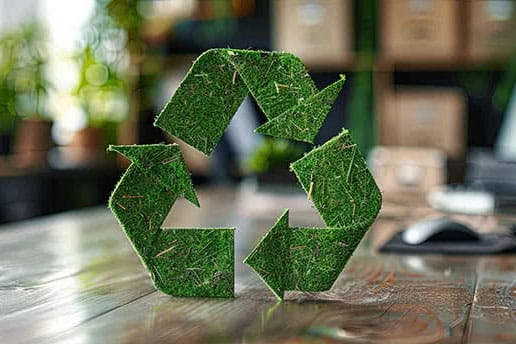In an era where sustainability is more important than ever, local initiatives can make a significant impact. One often-overlooked area of waste reduction is textile recycling, particularly for threads, yarns, and fabric scraps. A Community Thread Recycling Program can help divert these materials from landfills while fostering creativity and environmental awareness. Here’s a step-by-step guide to launching a successful program in your neighborhood.
1. Research and Assess Local Needs
Before launching your program, gauge community interest and identify existing textile recycling options.
- Survey local craft groups, schools, and tailors to see if they discard usable thread or fabric scraps.
- Check municipal waste guidelines to understand how textiles are currently handled in your area.
- Identify potential partners, such as sewing clubs, recycling centers, or eco-conscious businesses.
This research will help shape your program’s structure and ensure it fills a genuine gap.
2. Define the Scope of Your Program
Decide what types of materials you’ll accept and how they’ll be repurposed. Common recyclable thread-related items include:
- Spools of unused thread
- Yarn remnants
- Fabric scraps
- Damaged textiles (for upcycling or stuffing material)
Establish clear guidelines on what can and cannot be recycled to avoid contamination.
3. Secure Collection Points
Convenience is key to participation. Partner with local businesses, libraries, or community centers to host collection bins. Ensure:
- Bins are clearly labeled with accepted materials.
- Drop-off locations are accessible and well-publicized.
- Regular pickups are scheduled to prevent overflow.
If possible, offer home pickup services for bulk donations from tailors or crafting groups.
4. Build a Volunteer Network
Recruit volunteers to help with sorting, storage, and distribution.
- Engage local schools or scout troops for youth involvement.
- Train volunteers on proper sorting techniques.
- Assign roles such as collection coordinators, social media managers, and outreach liaisons.
A strong volunteer base ensures smooth operations and community buy-in.
5. Partner with Artists and Crafters
Connect with local artisans who can transform recycled threads into new products. Potential partnerships include:
- Weavers and knitters who can use yarn remnants.
- Quilting groups that repurpose fabric scraps.
- Art teachers who incorporate materials into student projects.
Highlighting these creative reuse opportunities can inspire more donations.
6. Organize Recycling Drives and Workshops
Host events to raise awareness and encourage participation. Ideas include:
- Thread swap meets where people exchange unused supplies.
- Upcycling workshops teaching how to turn scraps into new items.
- Repair clinics to extend the life of damaged textiles.
These events foster community engagement while reducing waste.
7. Establish a Redistribution System
Determine how collected materials will be reused or recycled:
- Donate usable thread and fabric to schools, shelters, or craft nonprofits.
- Send damaged textiles to textile recyclers for industrial processing.
- Sell high-quality remnants at low cost to support program sustainability.
Transparency about where materials go builds trust and encourages ongoing participation.
8. Promote Your Program
Effective outreach ensures long-term success.
- Create social media pages to share updates and success stories.
- Design flyers and posters for local bulletin boards.
- Partner with local media for coverage of your initiative.
Highlighting environmental benefits—such as landfill diversion and resource conservation—can attract more supporters.
9. Measure Impact and Adapt
Track key metrics to evaluate your program’s success:
- Pounds of materials collected monthly.
- Number of participants and partners.
- Stories of upcycled creations.
Use this data to refine collection methods, expand partnerships, and apply for grants if needed.
10. Plan for Long-Term Sustainability
Ensure your program outlasts its initial launch by:
- Applying for local environmental grants.
- Establishing a small fee for commercial donors (e.g., tailors, fabric stores).
- Training new leaders to take over if original organizers step down.
A self-sustaining model keeps the program running for years to come.
Final Thoughts
A Community Thread Recycling Program is more than just an eco-friendly project—it’s a way to unite neighbors, support local artists, and reduce waste creatively. By following these steps, you can turn discarded threads into valuable resources while fostering a culture of sustainability.
Visit these links for similar information :
https://aismsocialride.it/
https://familynursehomecare.com/
https://usydfoodcoop.org/
https://alpacadreamsnc.com/
https://scottishrepublicansocialistmovement.org/
https://livecliq.net/
https://qe2hotels.com/
https://blithespirittheplay.com/
https://vieille-charite-marseille.org/
https://houseofkava.com/
https://rambuseducation.com/
https://sacbiznews.com/
https://cannabisprofitscourse.com/
https://atoustages.fr/
https://childrensismoving.com/
https://usakitchenandhome.com/
https://hellowatch.co.uk/
https://landformblog.co.uk/
https://lawscl.org/
https://macgregorsladiesfashion.com/
https://easternfashiononline.com/
https://seikopoker.com/
https://motornewsfirst.com/
https://collezionivaticano.it/
https://csusmhistory.org/
https://petmall.org/
https://kardashianfragrance.com/
https://jennymacklin.net.au/
https://somdmda.org/
https://fashionbetgiris.net/

